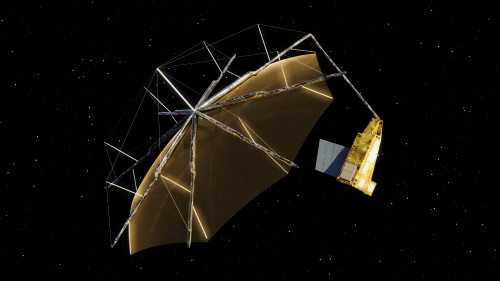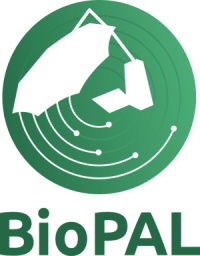- Learn & Discover
- ESA's open source computing pr...
ESA's open source computing project for the Biomass mission goes live
06 May 2021

ESA's seventh Earth Explorer, the Biomass mission, will provide crucial information about the state of our forests, how they are changing and the role they play in the global carbon cycle. Expected to be launched in 2023, the mission will be the first to carry a P-band synthetic aperture radar.
The P-band is the longest wavelength available in Earth observation and it will allow Biomass to measure the height of trees through the forest canopy and determine how much biomass is being stored in forests.
As space industry leaders develop and test the Biomass satellite in preparation for its launch, the team in charge of the mission at ESA is already looking ahead at the Biomass data and their processing.
The satellite’s novel sensors pose some challenges in this area. For one, scientific processing algorithms have to be developed with limited calibration and validation data pre-launch, but also in a timely fashion to meet the expected mission launch date in 2023. There is also a need to raise awareness of the data and build a scientific community around them, to enable rapid scientific discovery using Biomass generated data products.
BioPal: Collaborative open-source software development for ESA’s Biomass mission

The Biomass Product Algorithm Laboratory (BioPAL) is an open-source scientific computing project, which supports the development of ESA’s Biomass mission algorithms coded in Python. The goal of the BioPAL project is to bridge the gap between advancements in scientific algorithm development, and fast integration of these advancements into ESA’s Biomass’s ground operations.
“In a first for an ESA Earth Observation mission, Biomass Level-2 algorithms will be developed under a fully open license scheme and will be evolved through an open-source project,” says Klaus Scipal, SMOS and Biomass Mission Manager. “This will allow everyone not only to access the source code, but also to directly contribute to the algorithm evolution in an open and transparent way. By allowing data users to collaborate on the algorithms, we hope to nurture a growing community of scientists interested in Biomass data and their application.”
The BioPAL Community
BioPAL‘s growing community includes scientists, developers and ESA Staff. Its goal is to jointly create and reshape technology for processing data of the Biomass mission and include the broader scientific community in the enhancement of BioPAL and Biomass operational algorithms. The community aims to extend the initially proposed operational Biomass algorithm suite, as new insights into Biomass data become available.
Examples of already existing project software include the tools and configurations related to the deployment of the Biomass Level-2 prototype processors. The software developed by the project is released under the MIT open-source license, developed openly and hosted in public GitHub repositories under the BioPAL GitHub organisation. BioPAL also provides API documentation, tutorials, access to simulated mission data, and example workflows for Biomass Level-2 processing algorithms.